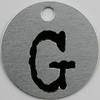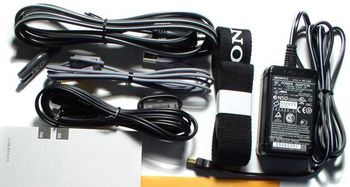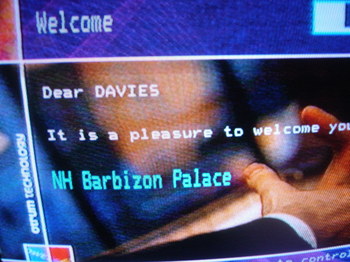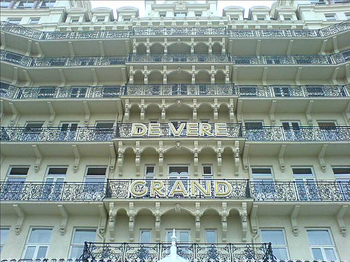I was at a conference a few months ago and ended up using the phrase ‘the tyranny of the big idea’ in response to a question, without really knowing what I meant.
(I do that a lot, blurt something out and then work out what I mean later.)
But it crystalised something that’s been at back of my mind for a while and recently, I’ve been thinking about it, and talking about it with various people, and have realised that other people are thinking along similar lines. So I've decided to try and tease out what I mean (this is just thinking in progress):
These days, a brand’s first job is to be interesting. And being interesting for most brands, most of the time means new ideas, new things to say, new ways to say it. (There is an alternative ‘slow brand’ model but we’ll come to that another time.)
Big ideas militate against that. Big ideas tend to stop you having new ideas.
But to think about that we maybe need to establish a relative scale of ideas.
Let’s say this:
- The Second Law of Thermodynamics is the size of Saturn.
- Sergeant Pepper is the size of the moon
- The Sony Walkman is the size of Japan
- Just Do It is the size of Beaverton, Oregon
- The average marketing Big Idea, presented in a pitch, is the size of a car park
- ‘Crumbelievable’ is the size of some cheese
And now let’s examine the characteristics of the Average Marketing Big Idea versus something like Just Do It. Or The Power of Dreams.
The Average Marketing Big Idea is big enough to give you a year or so of OK communications. It’s normally summed up in a tagline and some kind of visual consistency. It’s simple and clear. It’s useful because it lets you integrate all kinds of stuff, from all kinds of suppliers and it’s explicable to the salesforce
If it’s halfway decent consumers can be made to play it back and explain it in qualitative research (once you’ve beaten them over the head with enough focus group stimulus) and they will recall it in your tracking (once you’ve beaten them over the head with enough media exposure). It may or may not increase sales.
So far, so OK.
The downside – ideas of this size are hard to come by. They’re not exactly hard to come up with but they’re hard to get approved, hard to implement, hard to measure. They’re so specific that they’re always wrong somehow and they always piss someone off, so there’s always some politics involved somewhere.
Therefore, once they’re up and running, once the sales meetings have been had, the ads have been made, the three-ring binders have been issued people are incredibly reluctant to give them up. Which means the new ideas which are central to interestingness fall by the wayside because they don’t fit in the confines of the Big Idea. And the brand bores people with its consistency. (Though that’s much less likely to turn up in conventional tracking.)
Now, let’s examine an idea the size and value of The Power Of Dreams or Just Do It.
First, the words don’t matter much. Just Do It is a brilliant memorable phrase which comes out of real language and that’s great, so it’s a good tagline, but that’s not the important thing. The Power Of Dreams is not a good line (there’s not a lot of poetry or memorability) but it’s still incredibly useful.
Because these things aren’t really Big Ideas, they’re just huge buckets to contain a whole bunch of small ideas. And small ideas are what makes a brand interesting and effective. A constant series of small, new, interesting vaguely-related ideas which move things on, which explore the edges of the brand, which renew the relationships with customers, employees etc.
I can’t quite think of the right analogy for how this works. John Grant is definitely there by combining the idea of brands as a cluster of ideas with an imperative to innovate but his molecular analogy doesn't quite convey the sense of direction and movement. A molecule looks too static, you don't get the sense of new ideas being added at the front and old ones being discarded out the back. That being said I can't think of anything better. Anyone got anything?
(By the way, this reminds me that I haven't written about John's new book yet, which is brilliant. I will try and get around to it shortly, but you should really just buy it and read it for yourself. And I'll add it to the library. Now, that I think about it, it's entirely possible that I'm just recycling John's ideas here, sorry John.)
The thing that make these idea buckets work is the precise opposite of what people usually look for in Big Ideas. They’re vague - which means they can accommodate all sorts of other, often contradictory thoughts. The vagueness means they’re hard to codify, which means they exist in conversation, images and bits of film, which lends itself to idea creation, and which means they’re hard to smelt down into an ordinary Big Idea. They’re often emergent – no-one sits down and creates them as the future of the company, because that’s impossible. They grow out of philosophy, sometimes via advertising, sometimes as other things, but they’re adopted and emerge as an expression of the idea bucket rather than imposed as such.
And, back to my original point about these kinds of ideas, the words don’t matter much. This isn’t about phrase-making. It’s not about the actual words, it’s the bundle of ideas, activities, history, products, people, attitudes, emotions, habits that the words represent. You can take the words away and the bundle still remains, having words is just a convenient heuristic for everyone.
So, if you buy this and you want to get yourself one of these bigger things that we shouldn’t call Big Ideas. How might you do it?
1. Starting doing stuff. Start executing things which seem right. Do it quickly and do it often. Don’t cling onto anything, good or bad. Don’t repeat much. Take what was good and do it differently.
2. Look for the patterns that emerge. Look for the phrases that people use to describe what you/they are doing. Collect the things that seem to work as summaries. Notice them, put them in a drawer, don’t turn them into CI guidelines.
3. Try not to write too much down. Manage the brand through conversation and impressionistic media – videos, stories, images, heroes. Not through mandates, best practise or benchmarking.
4. Don’t be media neutral. Favour the things that are rich with experience and texture - events, retail, social media, film. And relegate the things that are thin and specific. Because the rich stuff is more likely to help you move forward.
5. And something else and something else.
Er, that’s it for now. I think there’s something in this and I’ve not quite got there yet, but I thought I’d think out loud for a bit. That's why I write blogs not books, I can't do that sustained thinking.
And, since I've always been a fan of Grant's notes at the end of his posts, here are some notes, kind of:
a) I’m not planning to talk about Nike much, I don’t think that’s right, but this time Just Do It was the most apt analogy. It's not like I'm giving anything away.
b) Full credit must go to Joey Headset for uploading Crumbelievable. Though I first heard about it on the splendid American Copywriter, I just can't track down which episode.
c) I've been meaning to write about this for ages, but it was Leland's really good thinking that got me off my arse to add my two cents. (see how transatlantic I am with my colloquialisms)
d) All credit in the world to Spell With Flickr.
e) As you can probably tell, I've yet to get any work.



















